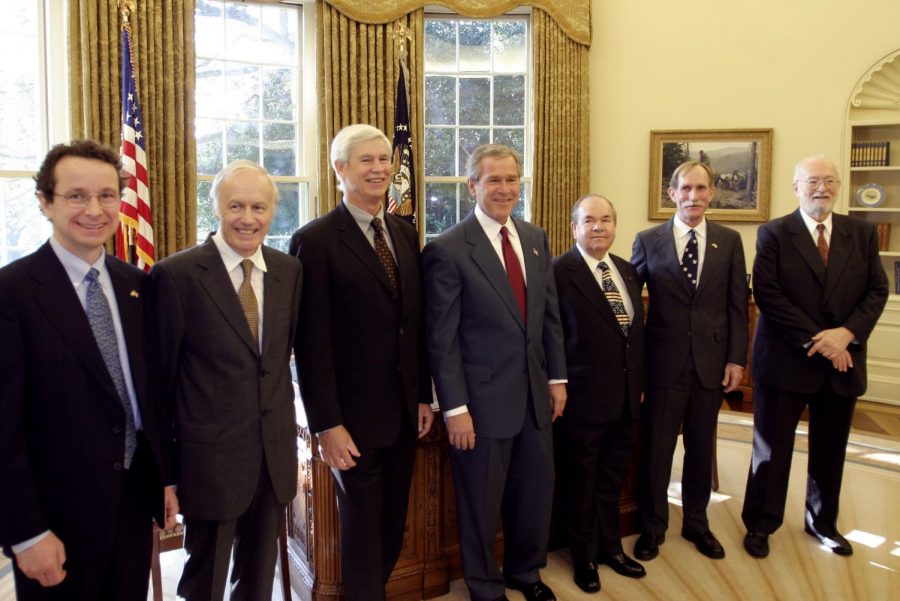Nobel Prize winner leaves his legacy
Photo Courtesy of Tribune News Service
President George W. Bush stands with 2003 Nobel Prize winners, including Paul C. Lauterbur (far right).
Dec 7, 2017
One early morning in October 2003, Gregory Girolami received a phone call that a close friend and faculty member who lived four houses down from him, Paul C. Lauterbur, was awarded the Nobel Prize.
Girolami, then department head of chemistry at the University, recalls driving Lauterbur from appointment to appointment that day, meeting with everyone who wanted to speak with him about the news.
“I remember as we were arranging for the day’s schedule,” Girolami said. “Paul said, ‘I’m in your hands, schedule what you need to schedule, but I have a meeting with my students at 4 o’clock and whatever you do, I’d like to keep that meeting.’”
On Nov. 9 of this year, Lauterbur was posthumously inducted to the Engineering and Science Hall of Fame, which is an “international organization established to honor engineers and scientists who, using scientific and engineering principles, have made a significant contribution to human well-being,” according to its website.
Lauterbur was awarded the Nobel Prize in Physiology or Medicine for his pioneering work in magnetic resonance imaging, also known as MRI, an award he shared with Sir Peter Mansfield of England, Girolami said.
Get The Daily Illini in your inbox!
Lauterbur’s initial proposal of MRI was reviewed as practically impossible by Nature, a scientific magazine, in 1973, Girolami said.
“He wrote to the editors (of Nature) and said, ‘I think you’ve made a mistake,’ and Nature decided to accept the paper which founded the field of MRI,” Girolami said.
Lauterbur joined the University in 1985, two years after Girolami. After he moved to the Department of Chemistry from the College of Medicine, his office was just a few doors down from Girolami in the Chemical and Life Sciences Laboratory, Girolami said.
Lauterbur switched into the Department of Chemistry in the spring of 2003 and won the Nobel Prize in October.
Girolami said after the paper was published in Nature, people immediately recognized the importance of the MRI discovery because General Electric jumped on the idea and started to develop imaging systems for hospitals within a few years.
“Paul relished being a scientific maverick and took delight in turning people’s ideas upside down. He did that a number of times,” he said.
The current head of the Department of Chemistry, Martin Gruebele, recalls Lauterbur’s humility in the way he dealt with fellow faculty members and students.
“Paul was gentle, kind, humble and when he would talk with you, he would listen … That was true for other faculty members and for his students,” Gruebele said. “He talked to an undergraduate student like he was a friend.”
Lauterbur worked at the University until he died at the age of 77 in 2007. His wife, Joan Dawson, passed away in July of this year.
“(Paul’s) largest legacy is saving tens of thousands of lives through the discovery of his technique that made early diagnosis of illnesses possible where it was (previously) impossible,” Gruebele said.
At the University level, Lauterbur left his imprint on those around him.
“On campus, his legacy is the students and postdocs he worked with, the science he did in collaboration with colleagues … and the people he trained that go out in the world and become scientists in their own right,” Gruebele said.






